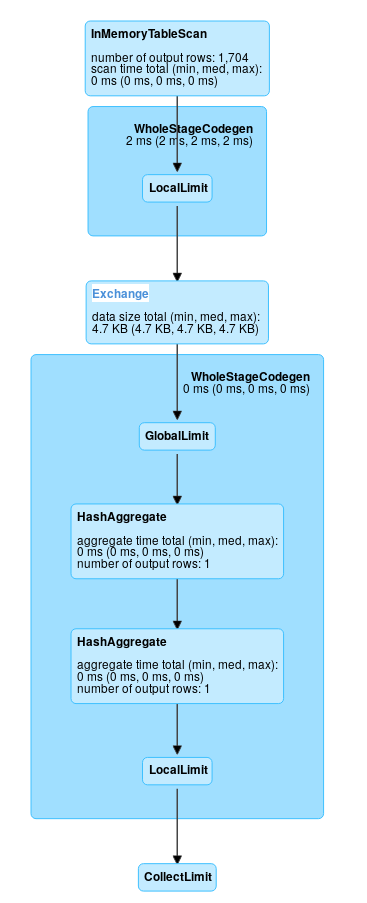I have 500 million rows in a spark dataframe. I'm interested in using sample_n from dplyr because it will allow me to explicitly specify the sample size I want. If I were to use sparklyr::sdf_sample(), I would first have to calculate the sdf_nrow(), then create the specified fraction of data sample_size / nrow, then pass this fraction to sdf_sample. This isn't a big deal, but the sdf_nrow() can take a while to complete.
So, it would be ideal to use dplyr::sample_n() directly. However, after some testing, it doesn't look like sample_n() is random. In fact, the results are identical to head()! It would be a major issue if instead of sampling rows at random, the function were just returning the first n rows.
Can anyone else confirm this? Is sdf_sample() my best option?
# install.packages("gapminder")
library(gapminder)
library(sparklyr)
library(purrr)
sc <- spark_connect(master = "yarn-client")
spark_data <- sdf_import(gapminder, sc, "gapminder")
> # Appears to be random
> spark_data %>% sdf_sample(fraction = 0.20, replace = FALSE) %>% summarise(sample_mean = mean(lifeExp))
# Source: lazy query [?? x 1]
# Database: spark_connection
sample_mean
<dbl>
1 58.83397
> spark_data %>% sdf_sample(fraction = 0.20, replace = FALSE) %>% summarise(sample_mean = mean(lifeExp))
# Source: lazy query [?? x 1]
# Database: spark_connection
sample_mean
<dbl>
1 60.31693
> spark_data %>% sdf_sample(fraction = 0.20, replace = FALSE) %>% summarise(sample_mean = mean(lifeExp))
# Source: lazy query [?? x 1]
# Database: spark_connection
sample_mean
<dbl>
1 59.38692
>
>
> # Appears to be random
> spark_data %>% sample_frac(0.20) %>% summarise(sample_mean = mean(lifeExp))
# Source: lazy query [?? x 1]
# Database: spark_connection
sample_mean
<dbl>
1 60.48903
> spark_data %>% sample_frac(0.20) %>% summarise(sample_mean = mean(lifeExp))
# Source: lazy query [?? x 1]
# Database: spark_connection
sample_mean
<dbl>
1 59.44187
> spark_data %>% sample_frac(0.20) %>% summarise(sample_mean = mean(lifeExp))
# Source: lazy query [?? x 1]
# Database: spark_connection
sample_mean
<dbl>
1 59.27986
>
>
> # Does not appear to be random
> spark_data %>% sample_n(300) %>% summarise(sample_mean = mean(lifeExp))
# Source: lazy query [?? x 1]
# Database: spark_connection
sample_mean
<dbl>
1 57.78434
> spark_data %>% sample_n(300) %>% summarise(sample_mean = mean(lifeExp))
# Source: lazy query [?? x 1]
# Database: spark_connection
sample_mean
<dbl>
1 57.78434
> spark_data %>% sample_n(300) %>% summarise(sample_mean = mean(lifeExp))
# Source: lazy query [?? x 1]
# Database: spark_connection
sample_mean
<dbl>
1 57.78434
>
>
>
> # === Test sample_n() ===
> sample_mean <- list()
>
> for(i in 1:20){
+
+ sample_mean[i] <- spark_data %>% sample_n(300) %>% summarise(sample_mean = mean(lifeExp)) %>% collect() %>% pull()
+
+ }
>
>
> sample_mean %>% flatten_dbl() %>% mean()
[1] 57.78434
> sample_mean %>% flatten_dbl() %>% sd()
[1] 0
>
>
> # === Test head() ===
> spark_data %>%
+ head(300) %>%
+ pull(lifeExp) %>%
+ mean()
[1] 57.78434

